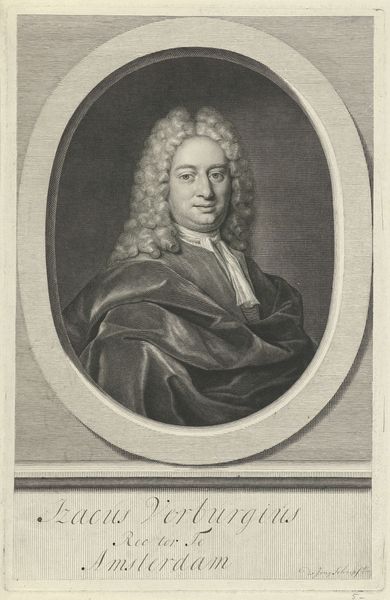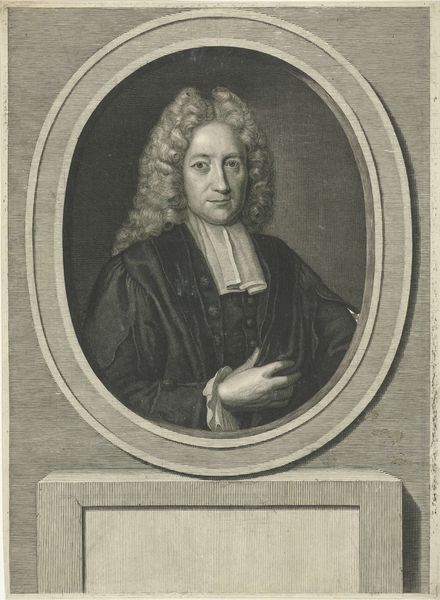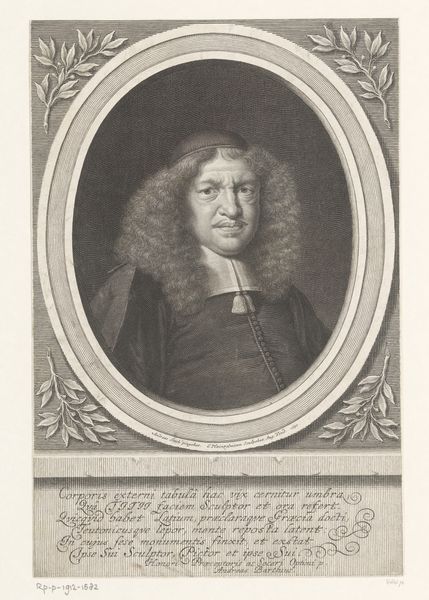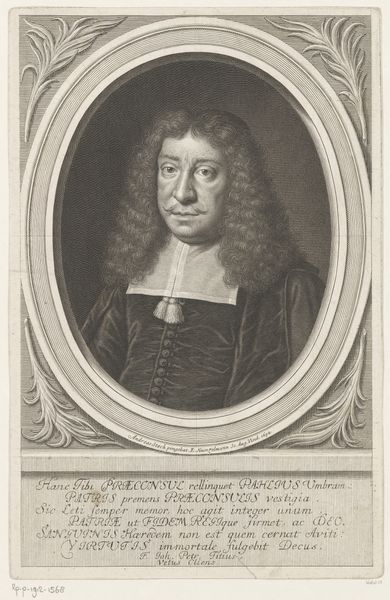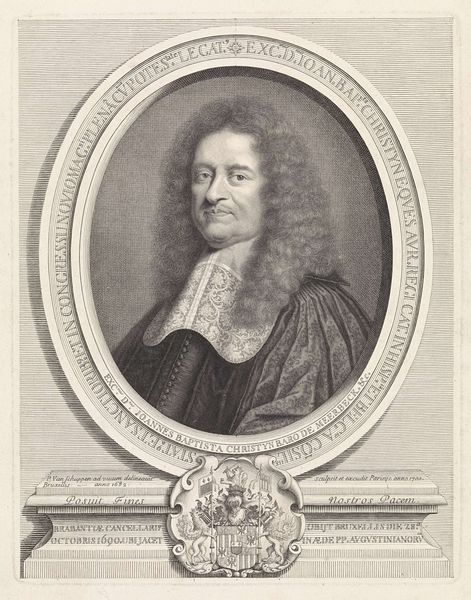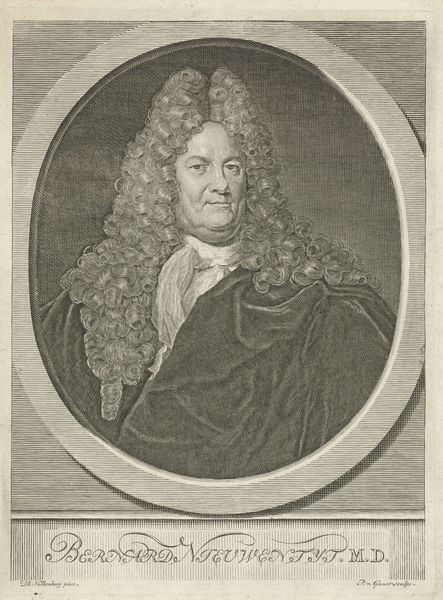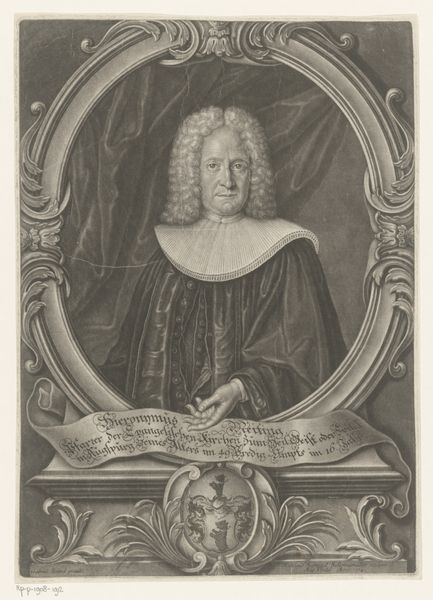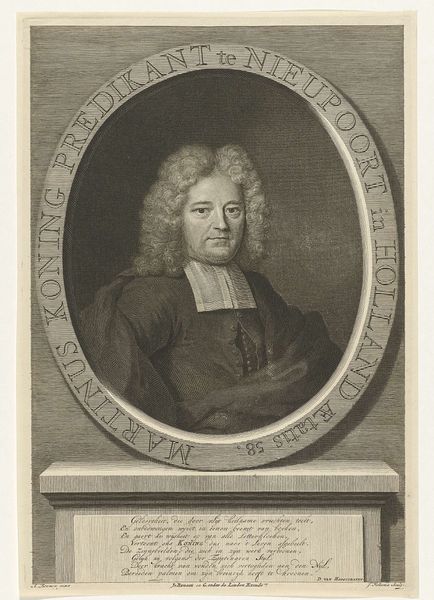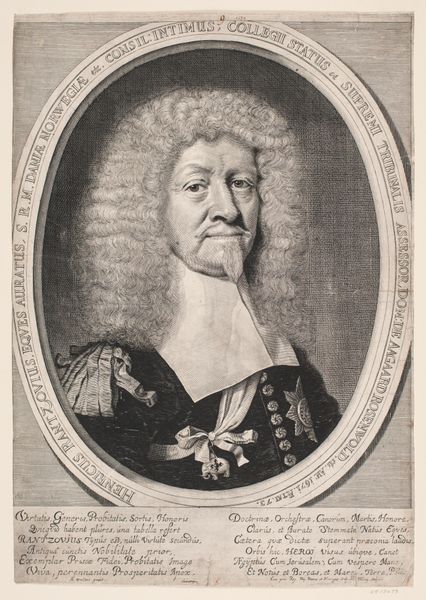
print, metal, paper, engraving
#
portrait
#
baroque
# print
#
metal
#
old engraving style
#
paper
#
engraving
Dimensions: height 268 mm, width 178 mm
Copyright: Rijks Museum: Open Domain
Editor: We're looking at "Portret van Georgius Bullus," a baroque-style print by Michiel van der Gucht, dating sometime between 1670 and 1725. It's an engraving on paper. I find the portrait quite striking; the detail in the rendering of his wig is incredible. What symbols or historical contexts do you see at play here? Curator: Indeed. Notice how the oval frame isn't merely decorative; it mimics the classical idea of a 'speaking portrait' or 'imago clipeata' that signals authority and wisdom. Then observe Bullus's wig and gown. These aren’t just fashion statements; they signify his status, likely religious or academic, within the social hierarchy of his time. The wig especially, became a potent symbol of status. Consider how easily adopted, rejected, or parodied such symbols might be through the ages. Editor: The frame and the wig do convey a certain weightiness. What about the coat of arms? It seems a bit…ominous. Curator: Excellent point! A coat of arms wasn't simply an identifier; it acted as a mnemonic device that reflected generations, told of allegiances, victories and losses, of values cherished across the family lineage. And note how the engraver meticulously depicted the textures: the polished frame, the fabric of his gown. This level of detail draws you in, doesn't it? Asks you to engage with the cultural weight carried by this man and this image. How do you think the contemporary viewer might react to seeing this work? Editor: I suppose it’s a potent reminder that visual symbols and codes evolve, but retain echoes of the past. It’s all far more complex than it first seems. Curator: Precisely! The image of Georgius Bullus becomes more than just a portrait. It's a point of access into the shifting cultural landscape of 17th and 18th century society. A single image is capable of holding immense emotional, cultural, and historical data.
Comments
No comments
Be the first to comment and join the conversation on the ultimate creative platform.


